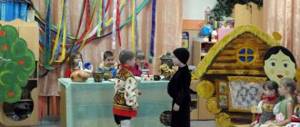Sleep and wakefulness
For a long time it was believed that sleep and wakefulness are opposite to each other. In fact, in a dream consciousness seems to be “silent”, but when awake it is active. However, research by psychologists has shown that both conditions have much in common. In a dream, a person continues to think, although the type of thinking of the sleeping person is completely different from that of the waking person.
We remember what we dreamed, and when we wake up, we are able to talk about it (individual dreams remain in memory for a lifetime). Sleep does not mean absolute peace. During some periods, the facial muscles and muscles of the limbs begin to twitch involuntarily.
Some people (about 4%) can even walk in their sleep. This phenomenon is called somnambulism (from the Latin somnus - “sleep” and ambulo - “I walk, wander”). In addition, having fallen asleep, we do not disconnect from the outside world, we are completely ready to receive certain signals, for example, a sleeping mother sensitively detects the cry of a child.
Finally, sleep does not destroy our plans. There are lucky people who know how to program themselves to wake up at the right time.
And so, there is no strict boundary between sleep and wakefulness. When we sleep, the brain is still functioning, but it is a fundamentally different type of brain activity.
A new stage in the study of the nature of sleep began thanks to the use of psychophysiological methods of analysis, primarily electroencephalography, or EEG - recording of bioelectric potentials of the brain. In addition, modern devices are capable of recording muscle tone, eye movements and many other physiological indicators of the body.
It turned out that the sleeping brain is characterized by several different phases and stages that repeat approximately every hour and a half. It was possible to identify two types of sleep - “slow” and “fast”, differing in the nature of the electrical activity of the brain, vegetative indicators (heartbeats, breathing), muscle tone, and eye movements.
Environmental education is not a part of education, but a new meaning and goal of the modern process - a unique means of preserving and developing humanity and continuing human civilization..."G. Yagodin, L. Tretyakova
Today, humanity is especially faced with the question of the need to change its attitude towards nature, restructure all its activities, and organize them in accordance with environmental laws. These goals cannot be achieved without appropriate upbringing and education of the new generation, without the formation of an ecological culture of the individual and society.
Presentation for the report “Sleep and Human Health” PowerPoint .ppt (~1.3 Mb)
A particularly powerful lever for environmental education and upbringing is the organization of children’s work through project and research activities. It promotes a more solid assimilation of previously acquired information, allows for better orientation in the environment, instills skills in rational environmental management, develops creative abilities, forms an active position in children, and ensures their personal and intellectual development.
Starting from the 6th grade, my students are engaged in search and research activities, which at the final stage are implemented in the following areas:
• Works of the NOU section “Ecology” • Participation in the environmental Olympiad • Competition of environmental projects “Our Home Nizhny Novgorod” • Conference “Ecology and Health” • Family environmental projects (projects, photographs, layouts)
As an example, I offer two works by my students who participated in the city conference “Ecology and Health” in 2011 and 2012, respectively.
Information card of scientific research work
Title of work: “ Sleep and human health ”
Author: Makarova Ksenia Vitalievna
class 9 “A” Educational institution (according to the charter) MBOU Secondary School No. 27, Nizhny Novgorod
FULL NAME. head, position: Kuleshova Lyudmila Alekseevna, biology teacher
Brief summary of the presented work
The nature of sleep has always aroused great interest and has given rise to many guesses and assumptions. This is not surprising, since a person spends a third of his life sleeping. The work gives an idea of the nature and phases of sleep, types and consequences of sleep disturbances, evaluates the impact of adequate sleep on human health, examines issues of sleep hygiene, types and characteristics of people's chronotypes.
The practical part is devoted to assessing the volume of short-term memory and the work efficiency of high school students according to their individual daily chronotype.
Kuleshova L.A., Makarova K.V.
Stages of sleep
“Slow” sleep includes 4 stages. At the stage of drowsiness, the main bioelectrical rhythm of wakefulness (alpha rhythm) is replaced by low-amplitude oscillations. At this time, a person may experience specific hallucinations: it is as if he is between sleep and reality. If someone has been picking berries all day or wandering through an art gallery, then when they close their eyes, they will most likely see strawberry bushes or a memorable painting. The next stage is shallow sleep.
It is characterized by a so-called spindle-shaped rhythm with a frequency of 14-18 vibrations per second. When the first “spindles” of sleep appear, consciousness turns off, and in the pauses between them it is easy to wake up a person. The third and fourth stages are called delta sleep, since it is at this time that the EEG records high-amplitude, slow oscillations - delta waves. At the third stage they occupy 30-50% of the entire electroencephalogram, and at the fourth stage - more than 50%. This is the period of deepest sleep.
Muscle tone decreases, the eyes become motionless, the pulse and breathing rhythm slow down and stabilize, and body temperature decreases by about half a degree. It is very difficult to wake a person when he is in delta sleep. If this can be done, the awakened person, as a rule, does not remember dreams and at first has poor orientation in the environment and in time. Delta sleep is the period of greatest disconnection from the outside world; it usually occurs in the first half of the night.
REM sleep is the last phase in the sleep cycle. The bioelectric activity of the brain, presented on the EEG, at this moment resembles the rhythms of wakefulness. Against the background of strong muscle relaxation, sharp twitching occurs in individual muscle groups, and cerebral blood flow increases. Similar combinations of brain activity and complete muscle relaxation explain another name for this stage - paradoxical sleep.
It is characterized by sudden changes in heart rate, breathing (a series of frequent inhalations and exhalations with pauses between them), episodic rise and fall in blood pressure; rapid eye movements are observed under closed eyelids. Those awakened in the REM sleep phase remember their dreams in 80-90% of cases.
During the night, a person almost always dreams for 1-2 hours. But often people do not remember them because they woke up at other stages of sleep.
The entire sleep period consists of 4-5 cycles. Each of them starts with “slow” and ends with “fast”. Unlike animals, people do not wake up after the next cycle; otherwise, there are no fundamental differences between the sleep of animals and humans.
Sleep has always been considered the best means of restoring strength - physical and mental. However, researchers for a long time could not come to a consensus on how and why this happens.
. Physiology of sleep
Sleep is a special state of human consciousness, which includes a number of stages that naturally repeat throughout the night. The appearance of these stages is due to the activity of various brain structures. There are two phases of sleep: slow and fast. During the slow-wave sleep phase, the body recovers physically. In adults, slow-wave sleep accounts for 75%. The whole body is resting. During deep slow-wave sleep, the brain produces huge amounts of melatonin. But very little time passes, and the REM sleep phase begins. The eyeballs move, the brain is actively working, but the person is still deeply asleep. The sequence of sleep stages is maintained if a person sleeps at unusual times. Brain activity during sleep often exceeds daytime levels. Sleep is not a frozen unconscious state.
Famous somnambulists
The English writer Robert Louis Stevenson, like Alexander Sergeevich Pushkin, loved to write while lying in bed, sometimes falling asleep while doing so. In the dream, I “watched” the unfinished plot and continued to record. Waking up, Stevenson was incredibly surprised at the work done.
An even more amazing story happened to the Italian composer Giuseppe Tartini. One night, his alarmed wife found him playing the violin, although Giuseppe looked like he was in a deep sleep. Having awakened, the composer wrote down the melody, and told his wife that he had heard it in a dream from the devil, who was moving his bow along the strings. Tartini called his work “The Devil's Trill.” Experts say this is his best thing.
When Dante Alighieri , it turned out that the 13th verse was missing in the final part of his poem The Divine Comedy. Friends and acquaintances of the great Italian poet turned to his children Jacobo and Piero, who were also quite famous poets, with a request to describe the missing text.
Years passed in creative torment. One day, as Jacobo later recalled, his father appeared to him in a dream. He ordered his son to get out of bed, took him by the hand, led him to the room he had once occupied, and said, pointing to one of the walls: “What you have been looking for for so long is here.”
Waking up, Jacobo found that he was lying in his own bed - most somnambulists return to their sleeping place after walking in their sleep. It was still night, but he rushed to his father's old friend Pierre Girardino and told him what had happened. Together they returned to the room where Dante Alighieri died, removed the tapestry from the wall and discovered a niche. In it, according to them, lay sketches of the “Divine Comedy” with a missing verse.
In the past, somnambulism was explained by the magical influence of the full moon and attributed to the influence of supernatural forces. Modern science does not see anything unusual in sleepwalking. The sleep of a somnambulist is not deep enough for inhibition to affect the motor centers of the brain. And the so-called reactive alpha rhythm, characteristic of people under hypnosis, is recorded on the electroencephalogram. As for the ability to walk on a rope or along the edge of a roof, which appears at such moments, scientists explain this mysterious phenomenon simply. The thing is that the sleeper does not experience any fear, which in ordinary life constrains our movements.
Sopor
Who in childhood did not worry about the fate of the beautiful heroine from Pushkin’s “The Tale of the Dead Princess and the Seven Knights”! What happened to the beautiful princess was not death: she was breathing, her heart was beating. But it doesn’t look like a dream either: after all, she didn’t come to her senses for a long time. What did the poet come up with?
Fairy tale by A.S. Pushkina had nothing to do with medicine, but it quite accurately described the picture of a special state of the body - lethargy (from the Greek “lethe” - oblivion and “argy” - inaction). This state of half-sleep, half-death has long excited the imagination of people. It’s not for nothing that there are several fairy tales similar to Pushkin’s.
Scientists call lethargy (lethargic sleep) a small or imaginary death. It occurs as a result of various diseases of the brain: inflammation, tumors, damage to the blood vessels that feed it. Lethargy also occurs in some mental disorders.
A person immersed in such a dream can look like both a sleeping person and a dead person, depending on the depth of lethargy. In light lethargic sleep, a person lies motionless, breathes barely noticeably, and the heart beats at a slow pace. However, the sleeper is able to swallow food if it is put in his mouth, and reacts weakly to external influences.
In rare, severe forms of lethargy, the patient really resembles a dead person: the skin is cold and pale, the pupils do not react to light, body temperature is sharply reduced, blood pressure cannot be measured, breathing and pulse are difficult to detect. Such a patient remains insensitive even to severe pain.
Attacks of lethargy occur suddenly and also stop suddenly. They last from a few minutes to... several years, and sometimes decades. The patient Kachalkin, included in all textbooks, was observed by I.P. Pavlov slept for 22 years in a row! How do people, having been in a state of pathological sleep for so long, not die from exhaustion?
It turns out that when the need for food or drink comes, they can partially come to their senses: chew, swallow food, and then even fulfill the natural needs of the body. A person sleeping soundly is able to hear conversations that are heard next to him, and sometimes remember something.
Since lethargy is a lesser death, chilling stories about those buried alive still do not lose their place in folklore. Although the very way of life and rituals of the peoples of the world prevent funerals “by mistake.” For example, Christians bury the dead on the third day after death, Muslims - during the day, but no one calls a hearse immediately after a person’s last breath. During preparations for the funeral, reliable signs of death have time to appear, which cannot in any way be observed during lethargy.
To conduct research on this issue, a questionnaire was developed containing the following questions:
| 1. | How late do you go to bed? |
| 2. | How early do you get up? |
| 3. | How many times do you wake up during the night? |
| 4. | Do you follow a daily routine? |
| 5. | Do you fall asleep easily? |
| 6. | Is it easy for you to get up in the morning? |
| 7. | How often do you have dreams? |
| 8. | Do you sleep during the day? |
| 9. | If not, do you have a desire to do this? |
| 10. | What do you do right before bed? |
| 11. | How many hours a day do you spend on the computer and game consoles? |
| 12. | How many hours a day do you watch TV? |
| 13. | How tired do you feel in the evening? |
| 14. | Do you read at night? |
Research results
35 4th grade students took part in the study. Only 8 people go to bed at 21-00, 10 people go to bed at 22-00, 17 students go to bed at 23-00 and later. In the morning, all children usually get up from 7 to 8 o'clock. Thus, the sleep duration of these students is 10, 9 and 8 hours or less, respectively. For this age, sleep duration should be at least 10 hours.
This means that only 8 people have adequate sleep, the rest of the children do not get enough sleep. Only four of the respondents sometimes have the opportunity to rest during the day. 12 people complain that they cannot fall asleep right away, 19 have difficulty getting up in the morning. 12 students read before bed, 8 do it from time to time.
12 people spend less than 1 hour and an hour a day at the computer, 9 – 2 hours a day, 14 people – 3 hours or more. 11 people spend less than 1 hour and an hour watching TV programs, 9 people – 2 hours, 15 students – 3 or more hours during the day, 4 people found it difficult to answer. 15 people surveyed feel very tired in the evening.
Conclusion
Experiments in which people were deprived of sleep showed that the body especially needs “rapid” and delta sleep. In subjects who had been deprived of sleep for a long time, delta sleep first increased and then, on the second and third nights, the REM sleep phase lengthened.
Scientists have found that delta sleep plays an important role in the process of memorization. The more it is saturated with delta waves, the better and faster a person assimilates the necessary information during wakefulness.
The duration of REM sleep, according to the hypothesis of modern Russian psychophysiologists V.S. Rotenberg and V.V. Arshavsky, depends on a person’s search activity. With depression and anxiety neurosis, sleep moves to the rapid phase much earlier. For a person who finds himself in a new, unfamiliar situation that requires an active response to events and deep concentration, the REM sleep phase becomes shorter.
In manic states, which are characterized by high but unordered search activity, REM sleep is reduced to 15-18 minutes. per night at a rate of 90-100 minutes. “Rapid” sleep compensates for the lack of activity and impressions during wakefulness. It is no coincidence that participants in long winter camps, where life is strictly predetermined and poor in vivid impressions, later recall unusually colorful, exciting dreams.
An interesting hypothesis about the importance of REM sleep for human health was put forward by modern American psychologist Ernest Hartman. He divided the people he examined into two groups: “long sleepers” (at least 9 hours) and “short sleepers” (about 6 hours). It turned out that they differed precisely in the duration of “REM” sleep: among “long sleepers” it took almost twice as long. Studies have shown that long sleepers are less emotionally stable than short sleepers.
They took all problems to heart and were characterized by restlessness, anxiety, and mood swings. In their dreams, they seemed to be escaping the difficulties of life: they went to bed neurotic and woke up healthy. After interviewing people with different sleep durations at different periods of life, Hartman found that sleep reduction occurs during periods of good health, enthusiasm for work, and absence of troubles. The need for sleep increases when difficulties arise, bad mood and decreased performance.
Many people consider long sleep a waste of time. However, experimental studies show that lack of sleep affects mood, performance of tasks requiring attention or ingenuity, speed of reaction, memory, and decision making. It often becomes the cause of accidents and disasters. Reducing the duration of sleep even by 1.3-1.5 hours has a negative effect on a person’s condition.
As it turned out, the need for sleep in young people is 8.5 hours, while the actual duration of sleep usually does not exceed 7.4 hours. This difference is not at all harmless. And sleeping no more than 6.5 hours for a long time can seriously undermine a person’s health.
Bibliography
- IN AND. Dahl. Proverbs of the Russian people, volume 2.
- G.I. Kutsenko, Yu.V. Novikov. A book about a healthy lifestyle. Ed. "Phoenix", 2003.
- R. Rotenberg. Growing up healthy: Children's encyclopedia of health. Ed. , 2001.
- “Encyclopedia for children “AVANTA+” vol. 18 “MAN” parts 1 and 2, Moscow, ed. "AVANTA+", 2008.
- P.P. Sokolov. Victory over insomnia.
- Isn't it time for a treat? - M. Baby.
- Children's encyclopedia. I'm exploring the world. Ed. "Enlightenment", 2004




